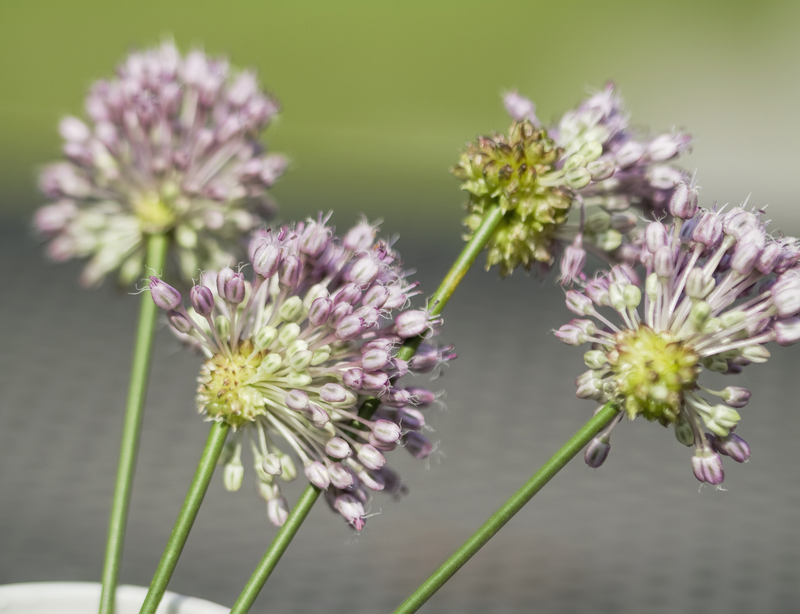Leafy Solutions: Tending Gardens, Tending Climate
Posted on 22/08/2025
Leafy Solutions: Tending Gardens, Tending Climate
Discover how embracing gardening and plant-based solutions can help nurture both your local environment and the global climate. Dive into the world of leafy solutions for a greener, healthier, and more sustainable planet.
Introduction: The Green Connection Between Gardens and Climate
In a world facing climatic uncertainties, environmental degradation, and increasing carbon emissions, gardening stands out as both a sanctuary and a solution. Not only do well-tended gardens provide beauty, food, and tranquility, but they also offer critical leafy solutions to help mitigate climate change. From absorbing carbon dioxide to sustaining local biodiversity, gardens--backyards, rooftop patches, or community greenscapes--are pivotal in our fight to stabilize the climate.
This comprehensive article will explore the multidimensional role gardens play in climate action, biodiversity preservation, and eco-friendly living. If you are seeking inspiration, practical gardening tips, and an ecological perspective, read on!

The Science Behind Leafy Solutions
1. Understanding Photosynthesis: Nature's Climate Weapon
At the core of every thriving garden is photosynthesis--the incredible natural process by which plants convert sunlight, water, and carbon dioxide into energy and oxygen. Through this cycle:
- Plants act as carbon sinks, retaining carbon from the atmosphere and reducing greenhouse gases.
- They replenish the air with oxygen, essential for all aerobic life.
- Healthy plants and soil systems help regulate temperature and water cycles.
By cultivating more green spaces, we actively promote these climate-stabilizing processes.
2. Soil Health: The Silent Ally
Not all climate solutions are visible above ground. Soil acts as a massive reservoir for carbon, storing more than all the world's plants and atmosphere combined. Gardens rich in organic matter and microbial life:
- Enhance soil fertility and water retention.
- Prevent erosion and climate-induced degradation.
- Support plants in their growth and climate-defending functions.
Healthy, living soils are the foundation of any climate-resilient garden.
Leafy Solutions in Urban Landscapes
Urban Gardening: Greener Cities for a Cooler Tomorrow
Urbanization has led to the loss of green spaces and an increase in heat-absorbing concrete. However, the urban gardening movement is reversing this trend. By transforming rooftops, balconies, and unused lots into productive oases, citizens can:
- Reduce the urban heat island effect.
- Improve air quality and filter pollutants.
- Promote community engagement and local food production.
Leafy gardens in cities don't just beautify--they play a vital role in urban climate adaptation.
Vertical Gardens and Green Roofs
Innovative gardening methods such as vertical gardens and green roofs are transforming how we think about urban landscaping. These leafy solutions offer significant environmental benefits:
- Insulate buildings, reducing energy consumption and emissions.
- Provide habitats for birds and beneficial insects.
- Capture and use rainwater, mitigating flooding and runoff.
Community Gardens: Climate Solutions with Social Impact
Community-based gardening projects unite neighborhoods in climate stewardship. They not only increase access to fresh produce but also:
- Foster environmental education and awareness.
- Encourage biodiversity and pollinator health.
- Reduce food miles, lowering transportation emissions.
Every shared patch of green is a ripple of positive change.
Sustainable Gardening Techniques for Climate Resilience
Permaculture Principles: Designing with Nature
Permaculture is a design philosophy centered around mimicking natural ecosystems. Its goal? To create self-sustaining gardens that work in harmony with the local environment. Key practices include:
- Companion planting for natural pest control and mutual plant support.
- No-dig gardening to preserve soil structure and microbiome.
- Recycling organic waste into compost for healthy soil.
Water-Wise Gardening: Conserving Every Drop
Water scarcity is a major climate concern, and smart watering practices are crucial for climate-friendly gardens:
- Install rain barrels to harvest and reuse water.
- Group plants according to water needs (hydrozoning).
- Use mulch to retain moisture and suppress weeds.
- Choose drought-tolerant native species.
Efficient water use in leafy gardens can have a tremendous environmental impact.
Organic Gardening: Healthier for You and the Planet
Avoiding synthetic chemicals in your garden doesn't just yield healthier food--it reduces the environmental footprint of gardening. Organic practices include:
- Encouraging beneficial insects and pollinators.
- Building soil fertility with cover crops and compost.
- Reducing runoff and water pollution.
Native Plants: The Unsung Heroes
Native and regional plant species are naturally adapted to local conditions--making them easy custodians of the climate. These leafy solutions:
- Require less water, fertilizer, and maintenance.
- Support local wildlife and pollinators.
- Promote genetic diversity and resilience to pests.
Selecting native plants is a simple but powerful step towards a climate-friendly garden.
The Impact of Leafy Gardens on Climate Change
Carbon Capture and Reduction
By cultivating a dense variety of trees, shrubs, and perennials, gardens sequester significant amounts of carbon. Studies suggest that urban green spaces and home gardens can offset a portion of local and personal annual carbon footprints. When scaled, these effects complement larger reforestation and afforestation efforts.
Cooling the Microclimate
Plants absorb sunlight and release water vapor through transpiration--lowering ambient temperatures around them. Shaded gardens, tree-lined streets, and green roofs:
- Decrease reliance on energy-intensive air conditioning.
- Reduce urban heat waves and improve comfort.
Reducing Food Miles and Supporting Local Diets
Growing food in your own leafy sanctuary or participating in community gardens reduces the distance (and emissions) food travels from farm to table. Local, seasonal diets are less resource-intensive and encourage healthier eating habits.
Eco-Friendly Garden Design: Steps for Every Home
Assess and Plan Thoughtfully
Start by evaluating your garden space, local climate, and soil conditions. Design with purpose:
- Maximize green cover for carbon capture.
- Incorporate layers: trees, shrubs, and groundcovers.
- Allow space for composting and rain collection systems.
Choose Climate-Appropriate Plants
Select a diverse mix of native and climate-resilient species. These plants:
- Demand less water and maintenance.
- Are more resistant to pests and diseases.
- Enhance ecological stability and beauty.
Practice Sustainable Maintenance
- Mulch frequently to save water and boost soil health.
- Compost garden waste--no need for landfills.
- Use hand tools or electric alternatives to minimize fossil fuel use.
- Embrace integrated pest management over chemicals.
The Broader Benefits: Biodiversity, Wellness, and Beyond
Gardens as Biodiversity Hotspots
Small garden plots, when thoughtfully designed, serve as important refuges for wildlife. These leafy solutions help protect:
- Pollinators like bees, butterflies, and birds.
- Amphibians and beneficial predators that control pests.
- Rare and indigenous species under threat elsewhere.
More gardens mean more thriving micro-ecosystems!
Wellness and Community Engagement
The act of tending a garden is therapeutic. Studies repeatedly show that gardening:
- Reduces stress, anxiety, and depression.
- Encourages physical activity and connection to nature.
- Fosters community bonds when people grow, share, and eat together.

Leafy Solutions: Your Garden Climate Action Plan
Get Started with These Practical Steps:
- Audit your garden for sunlight, soil type, and water sources.
- Prioritize native and drought-tolerant plants for resilience.
- Install composting systems for zero-waste gardening.
- Harvest and recycle rainwater regularly.
- Share seeds, knowledge, and harvests with your community.
- Document your progress and encourage others to adopt these climate-friendly practices.
Conclusion: Tending Gardens, Tending Our Planet
Leafy solutions are not just a horticultural trend--they are a vital, accessible path towards a stable climate and a sustainable future. Whether you cultivate a windowsill herb box or manage a sprawling edible landscape, your garden is a living act of climate stewardship. By tending to our own green spaces, we each play a part in tending the climate we all share.
Remember, every seed sown and every plant nurtured is a step toward healing the Earth. Let's embrace leafy solutions and empower a greener tomorrow, one garden at a time!
- Start today--your garden matters more than you think.

